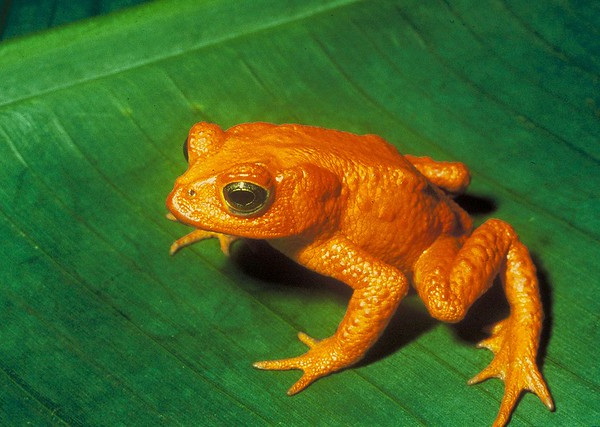Spring has sprung and a host of creatures great and small are emerging from winter hibernation… not the least of which are the world’s most amazing toads!
Cane Toad
Out of the approximately 500 species of so-called True Toads, Cane Toads (Rhinella marina) are generally recognized as being the largest. According to the Guinness Book of Records, the largest recorded Cane Toad was one kept as a pet in Sweden. “Prinsen” measured 38 cm (15 inches) from tip to tail (we know, toads are tailless) and weighed 2.65 kg (5.84 lb).
Cane Toads aren’t just big, they’re a big problem in regions such as Australia where they were introduced in 1935 by well-meaning humans. The warty amphibians are poisonous in all stages of their lives – even as tadpoles – and as such have very few natural predators. (image via Stephen Horvath)
Kihansi Spray Toad
The Kihansi Spray Toad (Nectophrynoides asperginis) was only discovered in 1996 and it’s already extinct in the wild! Native only to a very small and isolated area around the Kihansi waterfalls in southern Tanzania, this tiny (up to 1.9 cm or 0.75 inch) long dwarf toad’s only habitat was destroyed in 1999 when the Kihansi Dam dramatically reduced the misted micro-habitat around the falls.
Last seen in the wild in 2004, a captive breeding program is now underway with the goal of returning this toad species to an artificially aerated location near the falls. (image via Ruby 1×2)
Suriname Toad
The Suriname Toad (Pipa pipa) can grow up to 20 cm (8 inches) in length but size is the least of its remarkable attributes. This very flat toad looks a lot like a dead leaf, for one, and it has neither teeth nor a tongue! Common in its South American range and not threatened by habitat loss, the Suriname Toad boasts tiny eyes and an odd clicking croak it creates by snapping their throat bones together.
If all that isn’t strange enough for you, consider the Suriname Toad’s unique and unusual method of reproduction. Females release eggs that are pushed into the skin of her back by a mating male’s movements. The eggs are absorbed into the mother’s skin where the embryos develop and eventually pop out as tiny, fully-formed, newborn toadlets. (image via Ryan Somma)
